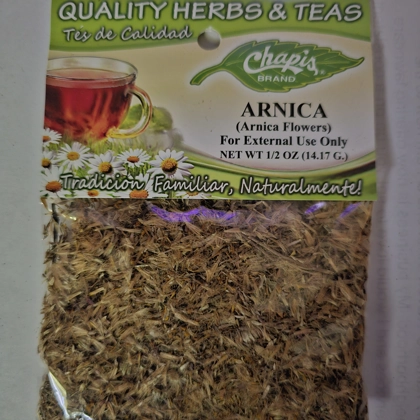Product Description
Arnica (Arnica montana) has been used for medicinal purposes since the 1500s and is still popular today. Applied to the skin as a cream, ointment, liniment, salve, or tincture, arnica has been used to soothe muscle aches, reduce inflammation, and heal wounds. It is commonly used for injuries, such as sprains and bruises. As an herb, arnica is usually used topically (on the skin) because it can cause serious side effects when taken by mouth. Oral homeopathic remedies do contain arnica, but they use a diluted form that is not considered dangerous. If you have any question about whether you have the herbal or homeopathic form of arnica, talk to your doctor.Plant Description
Arnica is a perennial that grows to a height of 1 to 2 feet with yellow-orange flowers similar to daisies. Stems are round and hairy, ending in 1 to 3 flower stalks, with flowers 2 to 3 inches across. Leaves are bright green. The upper leaves are toothed and slightly hairy, while lower leaves have rounded tips. It is native to the mountains of Europe and Siberia, and is cultivated in North America.
Parts Used
Fresh or dried flower heads are used in medicinal preparations.
Medicinal Uses and Indications
Arnica is used topically for a wide range of conditions, including bruises, sprains, muscle aches, wound healing, superficial phlebitis, joint pain, inflammation from insect bites, and swelling from broken bones. More recent studies suggest it may also be helpful in the treatment of burns.


